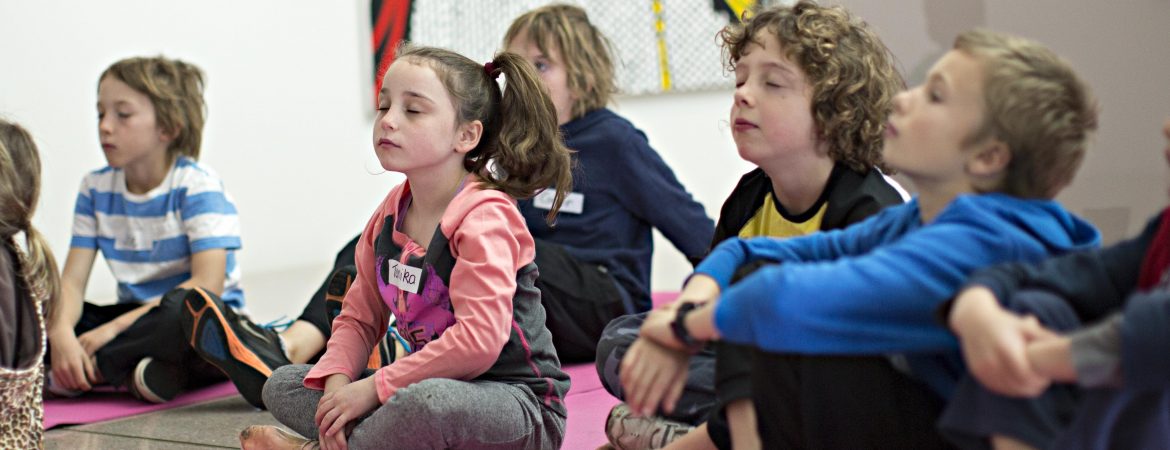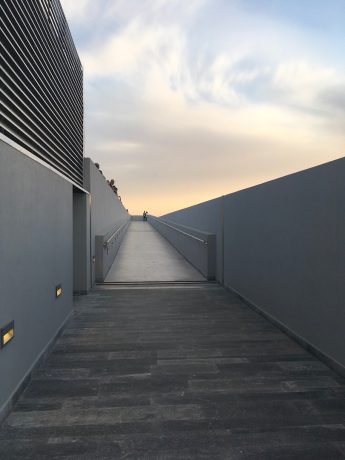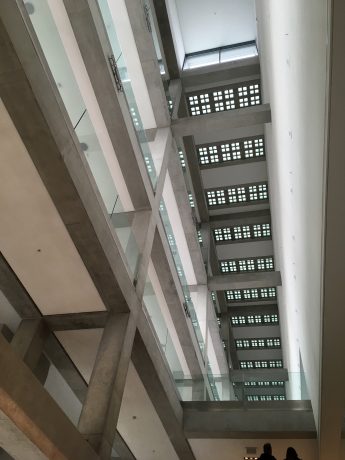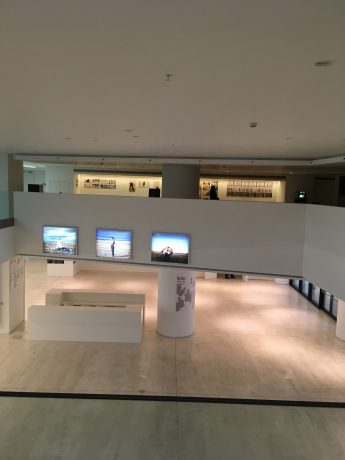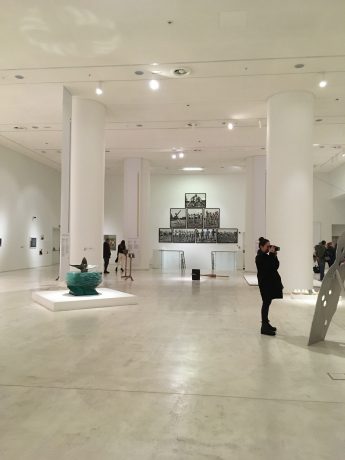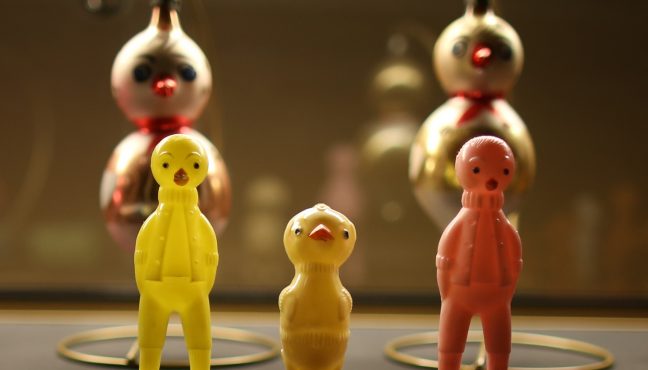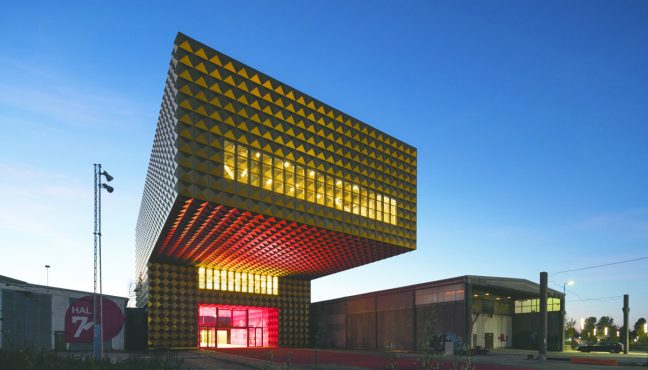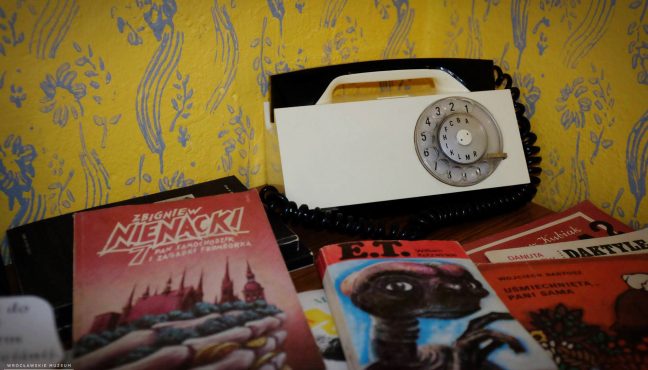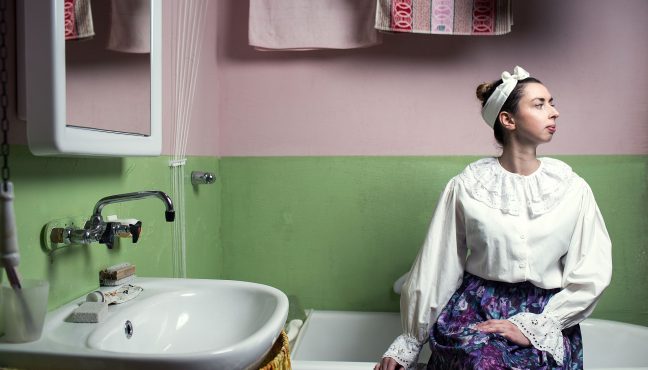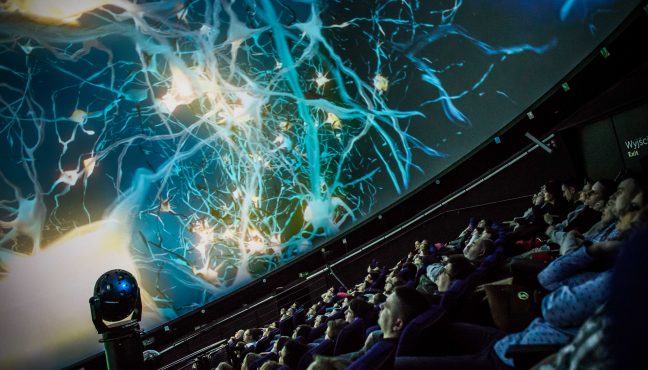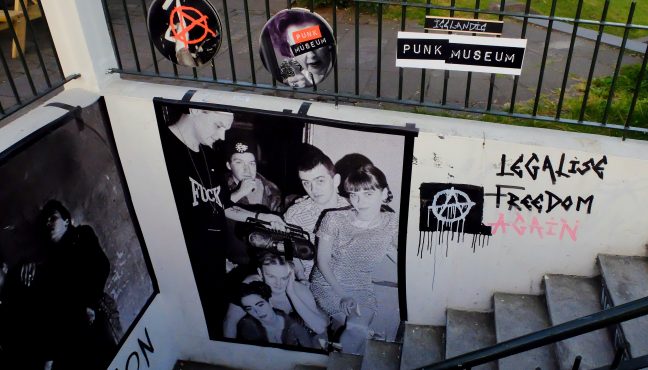Throughout the course of history, museums have turned from displays of collections to educational and social institutes. In recent years, museums have introduced various activities like interactive tours, theatrical plays, late-night parties, yoga lessons or workshops to stay in touch with the ever-changing society. In this context, museums expand their practices in to more engaging community programs that depict social issues and have an impact.
One of these practices is the art therapy programs. Relatively new to the field of museums, art therapy allows visitors to look for new creative experiences and at the same time it can provide psychological benefits. We caught up with Elisabeth Ioannides from the National Museum of Contemporary Art, Athens (EMST) to talk about the art therapy in museums today.


What is art therapy? How are artistic creations and therapy connected?
Art therapy, the union of art and psychotherapy, is an experiential process that uses art media as its primary mode of communication and is based on the belief that the creative process involved in the making of art is healing. Art therapy can help individuals (adults and children, individually, in couples or in groups) express themselves, explore and understand feelings, thoughts, or issues that concern them in order to manage or resolve their difficulties. By embracing the concepts of compassion, solidarity and empathy it helps individuals achieve change and growth through a wonderful journey of self-discovery with the artwork playing an essential role in this journey of awareness.
The works that are created in an art therapy session (through painting, collage, photography, sculpture, sand, etc.) become bridges between the verbal and the non-verbal, the conscious and the unconscious, the inner world and external reality.
The primary relationship, therefore, created is between the artwork and its creator. The fundamental power of art therapy, though, rests in the three-way process between the person seeking therapy, the therapist and the individual’s artwork. The created work does not have to be aesthetically pleasing and the participant does not need to have previous experience or skill in art. But in contrast to spoken words, the artwork is something that remains and in which the individual can return at some other time in his/her life and re-examine it. The magic of art therapy lies in the fact that the individual seeking therapy can make discoveries on the basis of his/her work.
What does an art therapist do?
The art therapist, is a trained individual, both in therapy and in art. He/She is knowledgeable about psychological theories, clinical practice, human development, the history of art and art practices. He/She has empathy and ensures the existence of a structured facilitating and safe environment where the participant can freely express him/herself. An art therapist can work in a variety of settings including mental health services, child and family centers, palliative care, rehabilitation centers, correctional facilities, schools, community organizations, care homes, etc. Nowadays, art therapists also work in museums and galleries.
Who do you think art therapy can be beneficial for and what are the benefits that it can provide?
Art provides a powerful and effective means of self-expression for people of all ages and abilities. Everyone can take advantage of the potential offered by the creative process to his/her health and well-being. Anyone from groups or communities to individuals to families can use art as therapy.
Participants may have emotional, behavioral or mental health problems, learning or physical disabilities, life-limiting conditions, neurological conditions or physical illnesses, or they might simply want to explore themselves more deeply.
The benefits of art therapy can be quite broad. It can provide psychological benefits; it can help people with their social skills; it can improve mental, emotional and even physical states (like reducing pain or stress). Not only can art therapy provide access to communication, problem solving and imagination but it can also bridge the conscious and unconscious.


Why do you think art therapy should be performed in the museum environment as opposed to other health or social institutions?
Nowadays, there is considerable practice and innovation in museums and galleries around health and well-being. The use of art therapy in museums has begun to emerge organically. Art therapy, museum education, other public health practices, social work, have all influenced its development.
Museums provide collective imagery and offer opportunities to learn about artifacts and their historical and cultural meanings. They depict information regarding the human experience and visitors can view artworks that could relieve them of feelings of isolation, can convey to people that their negative experiences have also been experienced by others, can enhance people’s self-esteem, confidence and creativity and foster intellectual stimulation.
“When museum personnel and art therapists collaborate, the museum operates as a place inclusive of diverse groups and serves as a place of sanctuary and restoration, as well as a place to connect in creativity, exploration, and learning. Collaborations between museums and art therapists serve as a catalyst for healing and transformation by using collective resources (i.e. artifacts, museum spaces,…) to enrich communities though creative expression (Peacock, 2012; Salom, 2011)” (Hamil, 2016).


As I have written in the article Museums as Therapeutic Environments and the Contribution of Art Therapy: “Gathering in a non-medical setting, surrounded by artworks and objects, away from the austerity of the hospital, the stigma of the mental health clinic, machines and white coats, makes people feel that they are in a more hospitable and friendly environment, which can lead to inspiration”. (Ioannides, 2016).
The setting carries an important role. In the museum visitors can choose where to place their attention, they can make social contacts, they can learn. The way a visitor uses the space (how he/she moves around, chooses objects to view, interacts) can provide metaphors related to boundaries, relationships towards transitions (Salom, 2008) and permanency. Granting the use of a museum and its collection to therapeutic processes allows individuals to be submerged in the art and from viewers become creators themselves.

“Within the museum space, art therapists can provide new and creative experiences for the participants, and interact with them in new ways. Participants, on the other hand, can find inspiration and different ways to create and tell their own stories. Art therapists have the attributes and capabilities to allow participants to have very strong experiences through art and provide them with the appropriate structure and therapeutic support” (Ioannides, 2016).
In what way can art therapy be implemented in a museum?
The British Association of Art Therapists (BAAT) has a specialist interest group that focuses of Art Therapy in Museums and Galleries. We are a network of professionals who are involved in, or interested in, developing therapeutic work with museums and galleries. On the website relevant information can be found on case studies and bibliography but also on the ways that art therapy can be implemented in a museum.
Art therapists working in museums and galleries play the role of group facilitator, supervisor or reflective practice facilitator (to others), and liaison between partners. Some art therapists work in museums and galleries because they want to help in creating funding proposals and evaluations, make projects accessible, and assist with participant recruitment and management


Could you give us some examples of museums around the world which have already introduced art therapy programs?
Last winter, for the first time in Greece, we realized at the National Museum of Contemporary Art, Athens (EMST) a pilot art psychotherapy program for a closed group of 10 participants, aged 18 and over. This was a collaboration between the Museum (EMST) and the First Psychiatric Department of the University of Athens, Eginition Hospital.
The art psychotherapy program entitled Exploring the Museum’s Images – Exploring My Image was designed and implemented by Aphroditi Pantagoutsou, Psychiatric Occupational Therapist and Art Psychotherapist at the First Psychiatric Department of the University of Athens, Eginition Hospital and myself, and was realized in collaboration with Professor G. Vaslamatzis of the First Psychiatric Department of the University of Athens.
The benefits of the gallery space as an inspirational creative therapeutic environment and the discussion of the artworks per se as well as the lives of the artists were the incentive for further personal exploration. The aim of the group was to involve participants in this community group, further develop their interests and give them the opportunity to use art media, the creative process, and the resulting artwork to reflect on their feelings, thoughts and experiences, build up their ego-strength, foster their self-awareness, reduce anxiety and increase their self-esteem through art making.
A second group will be realized in the autumn of 2017. Various museums around the world have introduced art therapy in their programs, including, but not limited, to the Dulwich Picture Gallery, London, the National Gallery of Australia, The Lightbox, Woking, the BALTIC CENTRE FOR CONTEMPORARY ART, Gateshead, the Ben Uri Gallery, London, the Orleans House Gallery, Twickenham, the Oriel Ynys Môn, Wales, the Memphis Brooks Museum of Art, Tennessee, USA, the Gloucester City Museums, the Holbrune Museum, Bath, the Museum in the Park, Stroud, the United States Holocaust Memorial Museum, Washington, DC, etc.
More information on some these projects can be found HERE. Professionals who would like to submit information on art therapy projects they have carried out in museums or galleries, are more than welcome to do so through the “Art Therapy in Museums and Galleries” website.

Please share with us your experience/impressions with art therapy programs on museums.
I’ve seen change taking place. Whether it is from case studies that I have read or from my own experience, participants in art therapy groups that take place in museums and galleries report a change taking place in their lives. Museums provide safe places for reflection and participants find the spaces and the artwork inspirational. They believe that there are a variety of things to stimulate interest. Artistic diversity and the collective nature of images and artifacts significantly influence them. The fact that connections develop between participants’ lives and the lives of the artists that lived in different times but also the encounters with the architecture of the building, play a significant role.
When we held the pilot program at the National Museum of Contemporary Art, Athens, at some point the museum was closed and work was going on for the installation of the next exhibition. Participants, therefore, had the opportunity to view an empty space, work around logistics like how to overcome constraints that arose from the fact that the museum was not in full operation, etc. These factors related to issues they had to work on in their everyday lives.
People’s personal routine changes when they visit a museum and what is interesting with art therapy in museums is that individuals participate in the therapy service rather than receive it. Museums are now striving to realize their full potential for society and be more than just collections and buildings. Implementing an art therapy program in a museum or a gallery can have significant beneficial effects on individuals from all walks of life. The whole process is extraordinary.

More on Elisabeth Ioannides:
Elisabeth Ioannides is an Assistant Curator at the National Museum of Contemporary Art, Athens (EMST). She has studied Psychology and Fine Arts at Brandeis University (Waltham, MA, USA), received her M.A. in the History of Art from the Courtauld Institute of Art (London), and a Post Graduate Diploma in Contemporary Art from the Sotheby’s Institute of Art (London). She is a member of Phi Beta Kappa, ICOM, AICA, the British & the Greek Associations of Art Therapists, the BAAT Art Therapy in Museums and Galleries Special Interest Group and a student member of the European Association for Psychotherapy. She was an Art Psychotherapy Trainee at The Arts & Psychotherapy Center in Athens, Greece, where she submitted her dissertation on the application of art therapy in museums. She has written several articles on art therapy and has also been a coordinator in exhibition catalogues published by EMST. Further information HERE.
More on the programs of the National Gallery of Australia:
The National Gallery of Australia has developed art therapy programs covering different age groups and needs. The “Art and Dementia” program concentrates on people living with dementia. Through the program, people have the opportunity to express their emotions and memories, interpret and engage with art while avoiding social exclusion. The Gallery works with community-based health professionals, residential care providers and directly with people living with dementia in the community to provide the program. The Gallery also provides professional development and training for visual arts and health care workers. “Creative meditation for children” is program for children aged 5-7 and 8-12. Children are able to explore and reflect on works of art, understand their emotions and share their experiences with the help of a child meditation facilitator. Lastly, “Yoga for lunch” allows visitors to engage with art in an informal way and quite relaxing one as they perform yoga inside the gallery spaces.
Recommended readings:
Hamil, S. (2016). The Art Museum as a Therapeutic Space (Doctoral dissertation).
Retrieved from: http://digitalcommons.lesley.edu/cgi/viewcontent.cgi?article=1036&context=expressive_dissertations
Ioannides, E. (2016). "Museums as Therapeutic Environments and the Contribution of Art Therapy," Museum International, vol. 68, no 271-272, 98-109.
Peacock, K. (2012). Museum education and art therapy: Exploring an innovative partnership. Art Therapy: Journal of the American Art Therapy Association, 29(3), 133-137.
Salom, A. (2011). Reinventing the setting: Art therapy in museums. Arts in Psychotherapy, 38(2) 81-85.
Salom, A. (2008). The therapeutic potential of a museum visit. International Journal of Transpersonal Studies, 27(1), 97-103.
